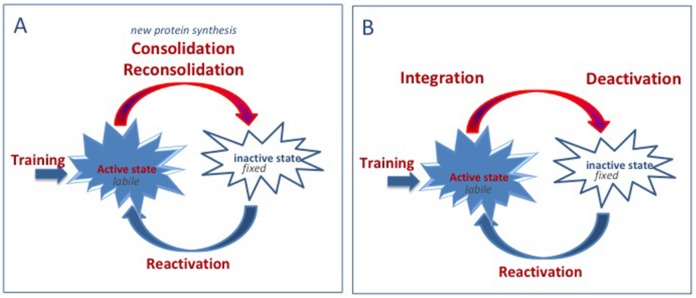Figure 1.
Comparison of the consolidation/reconsolidation hypothesis and the integration concept. (A) Consolidation/reconsolidation hypothesis: when reactivated, the memory is in an active state. When active, memories are labile/fragile and can be disrupted. Consolidation or reconsolidation process is required to fix/stabilize new and reactivated memories and to update remote memories. These processes take time and require new protein synthesis. Disruption of these processes leads to retrograde amnesia. (B) Integration concept: when reactivated, the memory is in an active state. When active, memories are labile and can integrate new information. Depending on the information content, integration could either result in updating (new/complementary information), strengthening (trials, “promnesic” treatments), disrupting (“amnesic” treatment, interference), or distorting (counterconditioning, false information) the initial memory.

